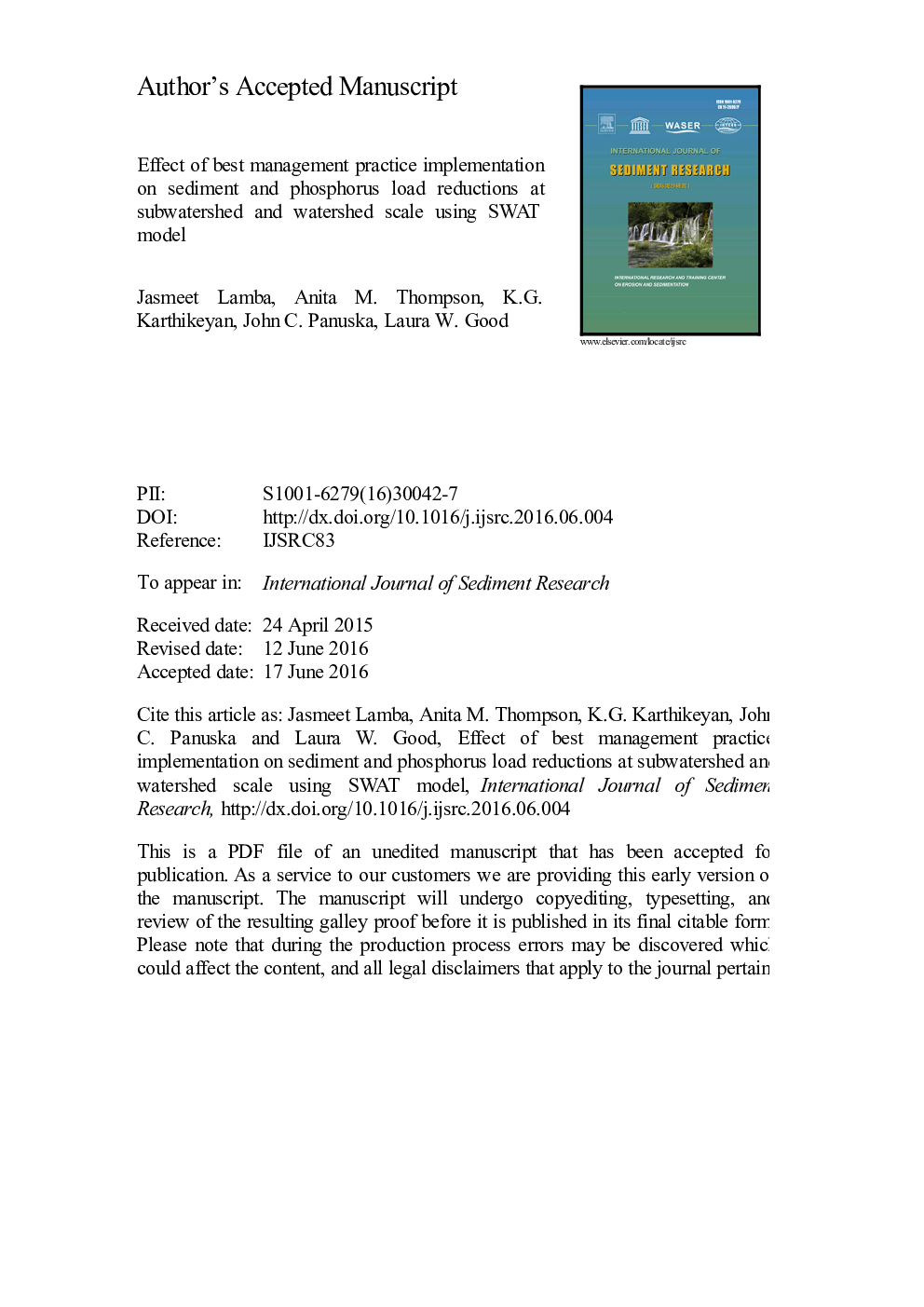| کد مقاله | کد نشریه | سال انتشار | مقاله انگلیسی | نسخه تمام متن |
|---|---|---|---|---|
| 8911225 | 1638095 | 2016 | 36 صفحه PDF | دانلود رایگان |
عنوان انگلیسی مقاله ISI
Effect of best management practice implementation on sediment and phosphorus load reductions at subwatershed and watershed scale using SWAT model
دانلود مقاله + سفارش ترجمه
دانلود مقاله ISI انگلیسی
رایگان برای ایرانیان
کلمات کلیدی
موضوعات مرتبط
مهندسی و علوم پایه
علوم زمین و سیارات
ژئوشیمی و پترولوژی
پیش نمایش صفحه اول مقاله

چکیده انگلیسی
Identification of areas contributing disproportionately high amount of pollutants (i.e., critical source areas (CSAs)) to streams is important to efficiently and effectively target best management practices (BMPs). Process-based models are commonly used to identify CSAs and evaluate the impact of alternative management practices on pollutant load reductions. The objective of this study was to use the Soil and Watershed Assessment Tool (SWAT) to identify CSAs at the subwatershed level and evaluate the impact of alternative BMPs on sediment and total phosphorus (TP) load reductions in the Pleasant Valley watershed (50 km2) in South Central Wisconsin (USA). The Nash-Sutcliffe efficiency, percent bias, and coefficient of determination ranged from 0.58 to 0.71, â12.87 to 38.33, and 0.67 to 0.79, respectively, indicating that SWAT was able to predict stream flow, sediment and TP loadings at a monthly time-step with sufficient accuracy. Based on the SWAT simulation results, annual average (2006-2012) subwatershed yield for sediment and TP ranged from 0.06 to 3.14 tons haâ1 yrâ1 and 0.04 to 1.9 kg haâ1 yrâ1, respectively. The croplands were the major source of sediment and TP in this watershed (â¥84%). Reduction in sediment and TP loading ranged from 66% to 99% at the subwatershed level after conversion of croplands to Conservation Reserve Program (CRP) grasslands in subwatersheds identified as CSAs. On the other hand, reduction in sediment and TP loading with implementation of no-till practices ranged from only 14% to 25%. At the watershed outlet, sediment and TP loading reduction was â¤15% after conversion of croplands to CRP grasslands and implementation of no-till practices because only about 8% of the watershed area was targeted for BMPs and/or resuspension of sediment deposited on the stream bed masked the downstream improvements in water quality.
ناشر
Database: Elsevier - ScienceDirect (ساینس دایرکت)
Journal: International Journal of Sediment Research - Volume 31, Issue 4, December 2016, Pages 386-394
Journal: International Journal of Sediment Research - Volume 31, Issue 4, December 2016, Pages 386-394
نویسندگان
Jasmeet Lamba, Anita M. Thompson, K.G. Karthikeyan, John C. Panuska, Laura W. Good,